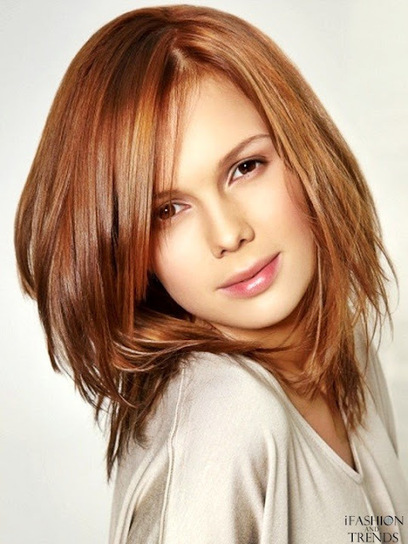Source(google.com.pak)
How To Do Cool Hairstyles For Girls Biography
We’ve all heard that blondes are dumb, brunettes are smart and dependable, and that curly-haired women are unhinged, but of all the hair stereotypes out there, no one suffers more injustice than redheads do. Throughout history, they’ve been subjected to discrimination and fearful prejudice, being viewed as untrustworthy, mischievous, temperamental, and lustful. In ancient Egypt, red hair was seen as so unlucky, red-haired girls were burned alive. According to Greek myths, redheads turn into vampires when they die. It’s even said that redheads get stung by bees more often. Ouch!
It can be hard to grow up with red hair, constantly getting called names like “ginger” and “carrot top.” Having the rarest hair color might make a redhead feel awkward, but it turns out that there are some special attributes that make them pretty unique. Maybe they’re the ones who have more fun. At the very least, their hair doesn’t go gray.
The Rarity of Red
In the late 1990s, scientists discovered that gene mutation causes red headedness. Specifically, it’s a variant of the melanocortin 1 receptor (MC1R), one of the key proteins that determines hair and skin color. The mutated gene is recessive, so in order for someone to have red hair, she has to inherit two copies of the gene, one from each parent. Lots of people, especially those with Northern European ancestry, carry one copy of MC1R, but relatively few carry the two copies required for flaming tresses. Red hair can occur in any ethnicity, but the greatest concentration of redheads originates in Northern Europe, near the U.K. Scotland has the highest percentage of natural redheads, with 13 percent and Ireland is a close second, with 10 percent. Only about 2 percent of people in the United States have naturally red hair.
If red hair is so rare, why does it occur so often in the same geographic area? Some biologists think that it’s an evolutionary adaptation. In cold and dark climates, fair coloring lets the skin absorb more light, which encourages the body to retain heat and produce more vitamin D. Also, for most of human history, people didn’t stray very far from the place where they were born and intermarried with people with similar genetic traits. When there were plenty of people carrying the gene, their children were very likely to get two copies of the mutated MC1R. Now that people migrate more, carriers of MC1R are more likely to intermarry with non-carriers. That’s good for genetic diversity, but maybe not so good for the survival of redheads in general.
For the past few years, there’s been a rumor that redheads are going extinct, but that’s not exactly true. Because of intermarriage, the numbers are declining, but there will always be redheads, because there will always be carriers of the MC1R gene. It might be less likely that one carrier will meet another and have redheaded children, but it’s always a possibility. In fact, it’s not so far-fetched to imagine a future where everyone knows exactly what’s in his or her genome, and MC1R carriers can choose to have children with fellow carriers, maximizing the likelihood that their children will have red hair.
A Redheaded “Knockout?”
The mutated MC1R gene has some other surprising effects. Although doctors and medical practitioners have long speculated that redheads were harder to sedate, a recent study from the University of Louisville determined that redheads really do require more anesthesia during surgery.
The researchers ran an experiment where they put women under sedation, and then tested their response to pain. The redheaded patients required 20 to 30 percent more anesthetic than other women to achieve the same level of sedation. Scientists at the university also tried to replicate the experiment with mice, and found that animals with a MC1R mutation required more sedation, too. They theorize that the mutated gene somehow has implications beyond hair color, and perhaps affects hormones or enzymes involved in our neurological system.
How To Do Cool Hairstyles For Girls

How To Do Cool Hairstyles For Girls

How To Do Cool Hairstyles For Girls

How To Do Cool Hairstyles For Girls

How To Do Cool Hairstyles For Girls

How To Do Cool Hairstyles For Girls

How To Do Cool Hairstyles For Girls

How To Do Cool Hairstyles For Girls

How To Do Cool Hairstyles For Girls

How To Do Cool Hairstyles For Girls

How To Do Cool Hairstyles For Girls
No comments:
Post a Comment